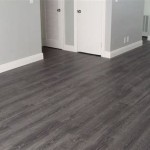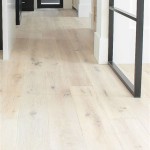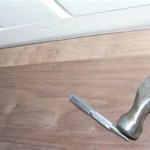Types of Outdoor Deck Flooring
Outdoor decks serve as extensions of the home, offering spaces for relaxation, entertainment, and connection with nature. Selecting the correct decking material is a crucial decision impacting the deck's longevity, aesthetic appeal, maintenance requirements, and overall cost. A variety of decking materials are available, each possessing unique properties and suitability for different climates, architectural styles, and budgetary constraints.
This article provides an overview of common outdoor deck flooring options, highlighting their key characteristics, advantages, disadvantages, and ideal applications, enabling homeowners to make informed decisions tailored to their specific needs and preferences. Understanding the nuances of each material is vital ensuring the deck remains a functional and visually appealing addition to the property for years to come.
Wood Decking
Wood decking represents a classic and widely popular choice for outdoor spaces, prized for its natural beauty, warmth, and versatility. Wood options vary significantly in terms of durability, resistance to rot and insects, and aesthetic qualities, impacting the overall lifespan and maintenance needs of the deck.
Pressure-Treated Lumber: Pressure-treated lumber is typically softwood, often pine, that has undergone a chemical treatment process to resist decay, insects, and fungal growth. This treatment involves injecting preservatives deep into the wood fibers, making it significantly more durable than untreated wood. It is the most economical wood decking option and suitable for framing the deck structure. However, it is prone to warping, cracking, and splintering over time, requiring regular staining or sealing to maintain its appearance and prolong its lifespan. Pressure-treated lumber is commonly available and relatively easy to install.
Cedar: Cedar is a naturally durable softwood known for its attractive reddish-brown color and aromatic scent. It contains natural oils that make it resistant to rot, insects, and moisture, making it a suitable choice for decking. Cedar requires less maintenance than pressure-treated lumber but still benefits from periodic staining or sealing to protect its color and prevent weathering. It is more expensive than pressure-treated lumber but offers a longer lifespan and a more refined appearance. Western Red Cedar is a particularly popular variety known for its exceptional beauty and durability.
Redwood: Similar to cedar, redwood is a naturally durable softwood prized for its rich color and resistance to decay and insects. It is known for its stability and minimal shrinkage, reducing the likelihood of warping and cracking. Redwood is a premium decking material that commands a higher price point than cedar or pressure-treated lumber. Sourcing redwood responsibly is crucial due to environmental concerns related to old-growth redwood forests. Regular sealing or staining is recommended to preserve its color and protect it from the elements.
Hardwoods (Ipe, Mahogany, Teak): Tropical hardwoods such as Ipe, Mahogany, and Teak represent the pinnacle of wood decking options, offering exceptional durability, resistance to decay and insects, and stunning natural beauty. These hardwoods are incredibly dense and strong, capable of withstanding harsh weather conditions and heavy foot traffic. They are naturally resistant to rot and insect infestation, requiring minimal maintenance. However, hardwoods are the most expensive wood decking materials and can be challenging to work with due to their density. Pre-drilling is usually necessary before screwing or nailing to prevent splitting. While they can be left to weather to a silver-gray patina, regular oiling or sealing will preserve their rich color and luster.
Composite Decking
Composite decking is a manufactured material made from a combination of wood fibers and recycled plastic. It offers a durable, low-maintenance alternative to natural wood decking, mimicking the look and feel of wood while eliminating many of its drawbacks.
Composition and Manufacturing: Composite decking is typically composed of approximately 50% wood fibers and 50% recycled plastic, along with additives that enhance its durability, color, and UV resistance. The materials are combined and extruded into boards that resemble natural wood decking. Some composite decking products feature a capped surface, providing an additional layer of protection against staining, scratching, and fading.
Advantages of Composite Decking: Composite decking offers several advantages over natural wood, including:
- Low Maintenance: Composite decking requires minimal maintenance, eliminating the need for staining, sealing, or painting. Regular cleaning with soap and water is typically sufficient to keep it looking its best.
- Durability: Composite decking is resistant to rot, insects, and moisture, making it a long-lasting option for outdoor spaces. It is also less prone to warping, cracking, and splintering than natural wood.
- Consistency: Composite decking offers a consistent color and texture, eliminating the variations found in natural wood. This ensures a uniform and aesthetically pleasing appearance.
- Sustainability: Many composite decking products are made from recycled materials, making them an environmentally friendly choice.
Disadvantages of Composite Decking: While composite decking offers numerous advantages, it also has some drawbacks:
- Cost: Composite decking is generally more expensive than pressure-treated lumber, although the long-term cost may be lower due to reduced maintenance.
- Appearance: While composite decking has improved significantly in recent years, it may not perfectly replicate the look and feel of natural wood. Some products may have a plastic-like appearance.
- Heat Retention: Composite decking can retain more heat than natural wood, making it potentially uncomfortable to walk on barefoot in direct sunlight.
- Staining: While composite decking is stain-resistant, it is not entirely stain-proof. Certain spills, such as oil or grease, may require immediate cleaning to prevent permanent staining.
Alternative Decking Materials
Beyond wood and composite, alternative decking materials offer unique characteristics and benefits, catering to specific needs and aesthetic preferences.
Aluminum Decking: Aluminum decking is a lightweight, durable, and low-maintenance option that is resistant to rot, insects, and fire. It is often used in coastal areas due to its resistance to saltwater corrosion. Aluminum decking does not splinter, crack, or warp and can be powder-coated in a variety of colors. It is more expensive than composite decking but offers a longer lifespan and superior durability. Aluminum decking can get hot in direct sunlight and require special fasteners for installation.
Plastic Decking (PVC): Plastic decking, also known as PVC decking, is made entirely from plastic and contains no wood fibers. It is extremely durable, waterproof, and resistant to rot, insects, and mold. PVC decking is low-maintenance and easy to clean. It is lighter than composite decking and can be installed with standard woodworking tools. However, PVC decking can be more expensive than composite decking and may have a less natural appearance. It can also expand and contract significantly with temperature changes, requiring careful installation to prevent buckling.
Tile and Stone Decking: Tile and stone decking offers a sophisticated and durable option for outdoor spaces. These materials are resistant to moisture, stains, and scratches and can withstand heavy foot traffic. Tile and stone decking can be made from various materials, including porcelain, ceramic, and natural stone. Proper installation is crucial to ensure proper drainage and prevent cracking. Tile and stone decking can be expensive and require a professional installer. It can also be slippery when wet and may require sealing to protect against staining.
Concrete Decking: Concrete decking is a durable and versatile option that can be customized with various finishes and colors. It is resistant to fire, insects, and rot and can withstand heavy loads. Concrete decking can be poured in place or installed as prefabricated panels. It requires proper drainage and sealing to prevent cracking and staining. Concrete decking can be expensive and require a professional installer. It can also be cold and hard underfoot.
Brick Decking: Brick decking offers a classic and durable option for outdoor spaces. It is resistant to fire, insects, and rot and can withstand heavy foot traffic. Brick decking can be laid in various patterns to create a unique and visually appealing surface. Proper drainage and sealing are crucial to prevent cracking and staining. Brick decking can be expensive and require a professional installer. It can also be slippery when wet.
Key Considerations for Deck Flooring Selection
Selecting the appropriate deck flooring material involves careful assessment of various factors to ensure the chosen material aligns with the homeowner's specific needs and priorities.
Budget: The initial cost of decking materials varies significantly, with pressure-treated lumber being the most affordable and tropical hardwoods the most expensive. Composite decking typically falls in the mid-range. It is essential to consider the long-term cost of ownership, including maintenance requirements and potential repairs or replacements. Low-maintenance materials may have a higher initial cost but can save money over time by reducing the need for ongoing maintenance.
Climate: The local climate plays a significant role in determining the suitability of different decking materials. In areas with high humidity or frequent rainfall, materials resistant to rot, mold, and insects are essential. In regions with extreme temperature fluctuations, materials that are stable and resistant to warping or cracking are preferable. Coastal areas require materials resistant to saltwater corrosion. Consider the impact of sun exposure on the potential for fading or heat retention. Some materials, such as composite decking, can get excessively hot in direct sunlight.
Maintenance Requirements: Different decking materials require varying levels of maintenance. Natural wood decking requires regular staining or sealing to protect it from the elements and prevent decay. Composite and PVC decking require minimal maintenance, typically only requiring occasional cleaning with soap and water. Aluminum and tile or stone decking are also relatively low-maintenance. Consider the amount of time and effort the homeowner is willing to invest in maintaining the deck.
Aesthetics: The aesthetic appeal of the decking material is an important consideration, as the deck should complement the style of the home and surrounding landscape. Natural wood decking offers a classic and warm aesthetic, while composite decking can mimic the look of wood but may have a less natural appearance. Tile and stone decking offer a more sophisticated and elegant look. Consider the color, texture, and grain pattern of the decking material and how it will integrate with the overall design of the outdoor space.
Durability and Longevity: The durability and longevity of the decking material are crucial factors in ensuring the deck remains a functional and aesthetically pleasing addition to the property for years to come. Materials resistant to rot, insects, moisture, and weathering will offer a longer lifespan and require less frequent repairs or replacements. Consider the expected lifespan of the decking material and its ability to withstand heavy foot traffic and harsh weather conditions.
Installation: The ease of installation can impact the overall cost of the deck, especially if professional installation is required. Some decking materials, such as pressure-treated lumber, are relatively easy to install, while others, such as hardwoods or tile and stone, may require specialized tools and skills. Consider the homeowner's DIY skills and experience and factor in the cost of professional installation if necessary.

2024 Outdoor Flooring Trends 10 Ways To Upgrade Your Space

Which Type Of Outdoor Flooring Is Right For Your Patio Covers And All

Duralife Instadeck Outdoor Flooring System Barrette Living

Which Type Of Outdoor Flooring Is Right For Your Patio Covers And All

Top 5 Outdoor Decking Options In Singapore

The 4 Best Deck Material Options For 2024 Timbertech

Types Of Outdoor Decking Material Muflooring Wood Flooring Singapore

What Types Of Composite Garden Decking Are There The Outdoor Look

Best Decking Materials For Your Yard The Home Depot

Interlocking Tiles Pavers Best Ways To Cover An Old Deck Ideas
Related Posts








